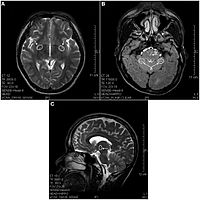
Photo from wikipedia
Due to the complex structure and function of central nervous system (CNS), human CNS in vitro modeling is still a great challenge. Neurotoxicity testing of environmental chemicals mainly depends on… Click to show full abstract
Due to the complex structure and function of central nervous system (CNS), human CNS in vitro modeling is still a great challenge. Neurotoxicity testing of environmental chemicals mainly depends on the traditional animal models, which have various limitations such as species differences, expensive and time-consuming. Meanwhile, in vitro two-dimensional (2D) cultured cells or three-dimensional (3D) cultured neurospheres cannot fully simulate complex 3D structure of neural tissues. Recent advancements in neural organoid systems provides excellent models for the testing of environmental chemicals that affect the development of human CNS. Neural organoids derived from hPSCs not only can simulate the process of CNS development, including early stage neural tube formation, neuroepithelium differentiation and regional specification, but also its 3D structure, thus can be used to evaluate the effect of chemicals on differentiation and morphogenesis. Here, we provide a review of recent progress in the methods of culturing neural organoids and their applications in neurotoxicity testing of environmental chemicals. We conclude by highlighting challenge and future directions in neurotoxicity testing based on neural organoids.
Journal Title: Genes and Environment
Year Published: 2021
Link to full text (if available)
Share on Social Media: Sign Up to like & get
recommendations!